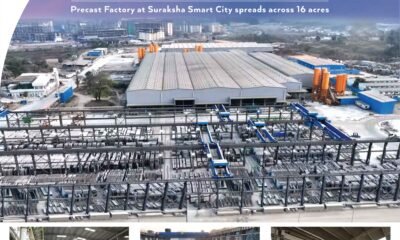News
NBIoT: Going where 2G, 3G, 4G can’t go

Source:https://www.xenius.in/nbiot-going-where-2g-3g-4g-cant-go/
Going beyond 2G, 3G and 4G, NBIoT is a technology that enables devices to send data even where there is no mobile network. Also, it is more secure, consumes less energy and provides better efficiency. Besides being hugely beneficial for automatic meter reading technology, NBIoT has a wide range of applications in agriculture, transport, environment protection, and smart city solutions.
Narrow Band Internet of Things (NBIoT) is a low-power wide area technology developed to enable a wide range of new IoT devices and services. It significantly improves the power consumption of a consumer’s device, system capacity, and also spectrum efficiency.
When 2G (or second-generation) cellular network was launched about two decades back, it only had the capability of data, messaging and global roaming. With 3G, came cloud computing and 4G brought the capability of live streaming, and being always connected. The NBIoT goes far ahead by enabling a large number of devices to send data where there is no mobile network coverage while also co-existing with other mobile networks. It is supported by all major mobile and chipset manufacturers. Using a licensed frequency spectrum, NBIoT features no interference with other devices, and guarantees a more reliable data transfer.
- It is supported by all major mobile and chipset manufacturers. Using a licensed frequency spectrum, NBIoT features no interference with other devices, and guarantees a more reliable data transfer.
- More importantly, NBIoT comprises simple infrastructure and can be implemented easily, and quickly, than other solutions bringing down the cost of services significantly.
- NBIoT has better, and deeper, indoor coverage than GSM, and also LTE. It has a wide range of applications in AMR, agriculture, transport, environment protection, and smart city solutions.
Although 5G has the capability of enhanced mobile broadband and critical communications, NBIoT is not a 5G network as it has the ability to access even areas with no network coverage. The NBIoT can cover large areas while using very little amount of energy. This technology is highly beneficial in automatic meter reading (AMR) technology. Large amounts of data can be transferred using NBIoT, even if the area is inaccessible on the network.
More importantly, NBIoT comprises simple infrastructure and can be implemented easily, and more quickly, than other solutions bringing down the cost of services significantly. The maintenance cost of the devices is also low and mostly borne by the operators. With NBIoT infrastructure, sensors can be placed close to the modules; this helps in better coverage even if the modules are kept underground. NBIoT has better, and deeper, indoor coverage than GSM, and also LTE. It has a wide range of applications in AMR, agriculture, transport, environment protection, and smart city solutions. It is much safer than 2G, 3G and even 4G.
As the world is largely dependent on Internet today, a secure network is the need of the hour, a network that cannot be compromised and is immune to cyber-attacks. NBIoT provides a more secure network and consumes less energy, thereby, being fit to be labelled as the technology of the future.

 News3 weeks ago
News3 weeks agoSpectrum@Metro Brings Biggest Dandiya Night to Noida on September 27

 News4 weeks ago
News4 weeks agoSuraksha Group Leads Mechanization of Construction With One of Asia’s Largest Captive Precast Factories

 Guest Column4 weeks ago
Guest Column4 weeks agoThe Connectivity Game: How Expressways are Redefining Urban Aspirations

 Guest Column3 weeks ago
Guest Column3 weeks agoWhat Homebuyers Should Know Before Choosing to Invest in Tier-II Cities

 Guest Column4 weeks ago
Guest Column4 weeks agoFarmstays Redefine Concept Of Experience-Driven Real Estate Across India

 Guest Column3 weeks ago
Guest Column3 weeks agoThe Infrastructure Effect: Jewar Airport, Metro Drive Luxury Housing Boom in Noida-Greater Noida

 News4 weeks ago
News4 weeks agoThe Omaxe State Hosts Prestigious BRICS CCI Gala Event on Mega Sports Cities

 News4 weeks ago
News4 weeks agoSky-High Luxury or Ground-Level Grace? Decoding Gurugram’s Housing Revolution








































